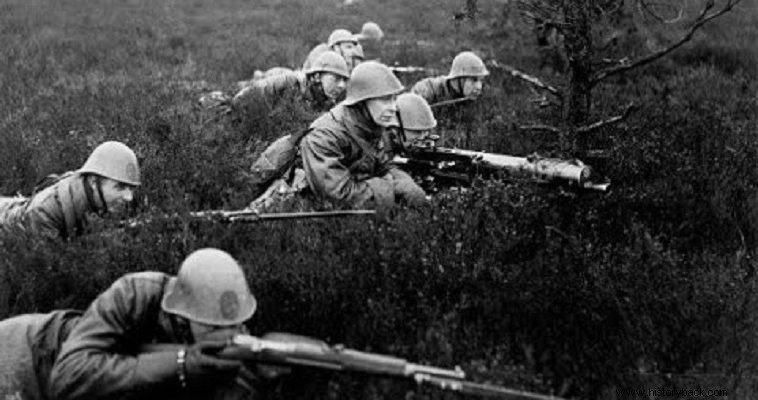
In 1940, the little Netherlands found itself caught in the vortex of the biggest world conflict without wanting it and most importantly without being adequately prepared militarily. The Netherlands had not been involved in World War I and this had given its leadership a sense of security as it believed that in the upcoming conflict it could escape its fate. The Dutch Army was small. From 1922 there was a term of only 165 days for all men aged 18.
From April 1938 the term was extended to 11 months. The army had a general staff and 11 arms and corps. The infantry consisted of 48 Infantry Regiments (IP), 24 reserve infantry battalions and 21 reserve border infantry companies, two Cyclist Regiments and 22 machine gun companies. The cavalry fielded five mounted regiments and two motorcycle regiments as well as two armored vehicle companies, while the artillery arm had 22 regiments, one motorized regiment, two anti-aircraft regiments and coastal guns.
In total there were four Army Corps (SS) each with two Infantry Divisions (IP), the temporarily formed "Peel" Division (from the river of the same name), the Light Division (EM) and three Infantry Brigades (PTB) which when the German attack was not fully formed. At the same time, there were also the troops of the border sectors. Also there was the command of the "Dutch Fortress", the last line of defense.
Each MP had three SPs, an Artillery Regiment, Engineers and Services. Each SP had three infantry battalions, a mortar company, an anti-tank company and a 57mm light gun artillery. Each battalion fielded three rifle companies and one machine gun company. The rifle companies had a strength of 184 men. The company had three or four platoons, each with three or four battle groups. The active SPs (1st to 24th) had a strength of 2,691 men. The enlisted SPs (25th through 48th) contributed 2,200 men. The Cyclist Regiments also had three battalions each. Each battalion had three rifle companies of 165 men each, a machine gun company and an anti-tank company and a mortar platoon.
Dutch soldiers carried the distinctive state M1927. The cyclists were armed with 6.5mm Mannlicher M 1895 revolvers, while their pedestrian colleagues were armed with the corresponding rifle. Each MP had 216 6.5mm Lewis M20 machine guns with 97-round magazine, 108 6.5mm Schwarzlose M08/15 machine guns. It also had 18 81mm Stokes-Brandt mortars and 12 47mm Bohler anti-tank guns.
The mortar company had three platoons each with two tubes. The anti-tank company also had six guns.
The Netherlands was attacked by the Germans in the early hours of May 10, 1940. Opposite the Dutch Army were the German 6th and 18th Armies. With the manifestation of the German attack, the French 7th Army moved in support of the Dutch. In the north the German attack was pinned down by the Dutch forces and their resistance was not overcome until capitulation. In the center the Dutch 2nd and 4th SS resisted fiercely on the "Grebe" line and retreated on May 14.
In the south the 3rd SS resisted as long as it could, but was defeated at Maastricht and forced to retreat. At the same time, German paratroopers fell behind the Dutch. A counterattack by the Dutch EM was repelled with the assistance of the Luftwaffe. Pressed from all sides, the Dutch capitulated after a leveling bombardment of Rotterdam by German aircraft. The Dutch had lost 10,800 men in the brief conflict with the Germans, causing them to lose 9,300 men. The Dutch Army was officially disbanded on 15 July 1940.
